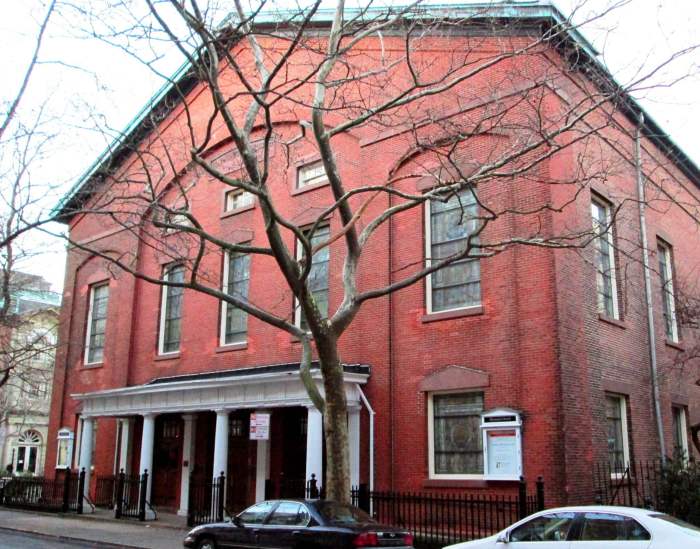Nestled on what could be mistaken for just an ordinary, unassuming street corner in Downtown Brooklyn, stands a brick building responsible for helping an unknown number of enslaved people in their journey to freedom.
The building, located at 227 Abolitionist Place, also known as 227 Duffield Street, was once home to some of the area’s most prominent abolitionists — and supporters are celebrating two years since the historic home was landmarked by the city and saved from demolition.
The building was owned by Harriet Lee and Thomas Truesdell from 1851 to 1863, when the duo provided necessary sanctuary and a stop on the Underground Railroad, which served to help enslaved people flee their slave owners to freedom.
“[Lee and Truesdell also worked with] Brooklyn’s local movement to support the liberation of formerly enslaved people centered on the churches on Duffield Street, including Bridge Street AME, Concord Baptist, and Plymouth Church,” said Shawne Joy Lee, daughter of late building owner Joy Chatel and co-founder of Friends of Abolitionist Place. “The Truesdells and their neighbors coordinated with these institutions, and their co-conspirators across the country, to help enslaved people reach freedom by any means necessary.”
One would think that a building with this much American history and significance to the Black community would be simple to preserve. However, from 2003 to 2021, Lee’s mother, known to many as Mama Joy Chatel, fought the City of New York to save Abolitionist Place.
“The contemporary fight to ‘Save 227 Duffield’ began with Mama Joy in 2003, when the city tried to confiscate and destroy the home through using Eminent Domain, which ravaged the character of the neighborhood,” Lee explained. “In 2007, Chatel sued to challenge the city’s eminent-domain eviction, with the help of Families United for Racial and Economic Equality.”
The lawsuit was settled, and Chatel was permitted to remain in her home, which she also partially converted into a cultural and educational center.
Before her death in 2014, Chatel had aspired to designate Abolitionist Place as a historically designated landmark, which means that any new construction, demolition or other alterations must first be approved by the NYC Landmark Preservation Commission.
The designation would preserve her former home, which was then partially owned by a developer who planned to demolish it to make way for a ten-story apartment building.
“Typically, buildings are designated landmarks for their architectural significance, but 227 Abolitionist Place’s design was nothing special. Instead, advocates had to make the case for the home’s historical significance,” said Lee.
On Feb. 2, 2021, the structure was officially designated landmark status with the help and advocacy of their neighbors and advocates.
A few weeks later, the city purchased the lot from the developers, but did not make clear their plans for the site. City officials told Brooklyn Paper’s sister site Brownstoner last summer that they were working to stabilize the structurally-unsound building, and planned to work with the community to develop a long-term plan for the site.
Lee and the Friends of Abolitionist Place have big plans for the home — to serve as a place “for the celebration, commemoration, study and cultivation of Black-led community activism.”
To honor this second anniversary of the designated landmark status, Friends of Abolitionist Place plans to hold a panel discussion on the past and future of the home on Feb. 22, in partnership with Assembly Member Brian Cunningham.
“The way you see a coalition, a collaboration of people doing this, it shows a lot but it also shows that it takes a whole community to make things like this happen,” said the pol at the panel.
On March 23, Abolitionist Place will also be holding a conversation in collaboration with the Lewis Latimer House Museum on the history of Mama Joy Chatel and her perseverance to save her home and its history along with a dialogue on the Women of Brooklyn Abolition Movement.























